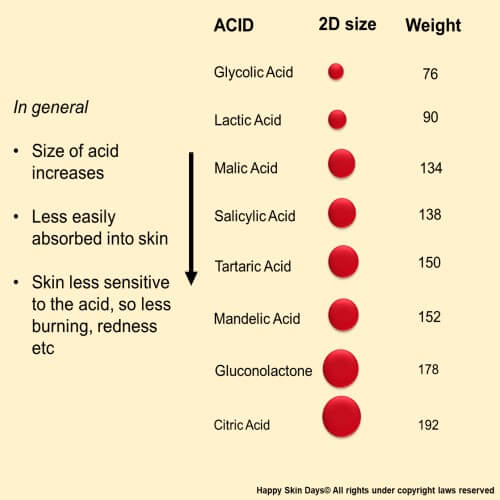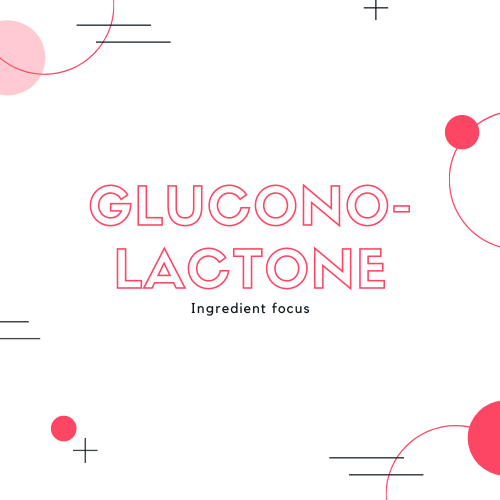(All references supporting the acid series are available at this LINK)
Introduction and trends in use
Gluconolactone or Glunoic Acid Delta Lactone is a polyhydroxy acid (PHA), which at 178g/mol, is more than twice as heavy as Glycolic Acid (78g/mol).
Structure

Benefits
PHAs have been dubbed as the next generation of Hydroxy acids, as they are used in skincare for more than their exfoliating properties….
The ingredients benefits include:
It is a humectant, which means it has a more than decent ability to attract and retain water. (Hyaluronic Acid and Glycerin are examples of other humectants). Gluconolactone is therefore (as you would expect) also associated with strengthening the Stratum Corneum (our topmost skin layer) as there is less trans-epidermal water loss.
It has anti-aging benefits including reducing pigmentation and improved skin texture for darker Fitzpatrick skin types (IV, V and VI) in the population of African-Americans, Asians and Hispanics => its anti-aging effects are comparable to Glycolic Acid except that it does not irritate the skin as much as Glycolic Acid.
In food, it demonstrated to be a free radical scavenger and therefore has anti-oxidant activity.
Gluconolactone has also been shown to protect against the detrimental effect of UVR => contrast that with Glycolic Acid, which is known to make the skin photosensitive.
Side-effects
Not as prominent for other hydroxy acids. Also it is chemically compatible with sensitive skin, such as those with rosacea.
Product front?
Which product? Good question. When I find some decent products I will post details here.
